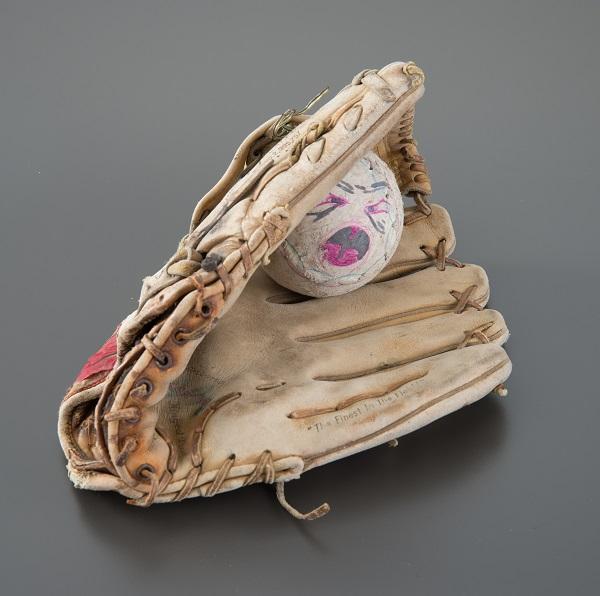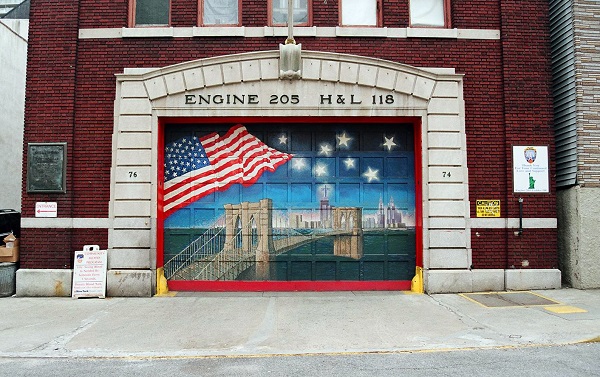Make a donation to the museum
Two Artifacts Tell the Story of FDNY Lieutenant and Backyard Softball Legend Robert Wallace
Two Artifacts Tell the Story of FDNY Lieutenant and Backyard Softball Legend Robert Wallace

A second-generation New York City firefighter and recipient of two commendations for bravery, Lieutenant Robert Wallace worked at Engine 205 on Middagh Street in Brooklyn Heights. Off duty, his “uniform” turned casual: usually, a well-worn pair of cutoff jeans, a denim jacket and a favorite T-shirt suitable for pick-up games in the backyard softball field that graced his home in the Queens neighborhood of Woodhaven.
A devoted father, Robert, who went by Bob, often served as motivational coach and catching partner for the Wallace “team,” consisting of four children and various nephews and nieces. Under the nickname The Hawk, Bob also played outfield for his firehouse on a regulation baseball diamond. Countless games were logged by this favorite, worn leather wing-tip fielder’s glove, donated to the 9/11 Memorial Museum in tribute to Bob Wallace by his wife Nancy, his mother Elizabeth and his sister Liza. They paired it with a softball on which he had sketched funny faces, a revelation of his good humor and efforts to amuse his fellow family players.
The Museum’s current special exhibition, “Comeback Season: Sports After 9/11,” recognizes a range of sport—softball, among them—that victims of the 2001 terror attacks had pursued or were pursuing with avocational passion. Like 43-year-old Bob Wallace, the great majority of people killed on 9/11 were in the prime of their adult lives.
On Sept. 11, 2001, Lt. Wallace had been detailed to Engine 22 in Brooklyn’s Boerum Hill neighborhood and responded to the World Trade Center with that unit. While not in the immediate company of his Engine 205 and Ladder 118 colleagues when the towers fell, he is represented, in perpetuity, as one of the eight new stars shining over the downtown skyline in an eye-catching mural painted on the garage door of the Middagh Street Firehouse, in memory of the eight members of the firehouse who made the ultimate sacrifice on 9/11.

This iconic if well-worn door was removed from 74 Middagh Street in late 2016. It has just found its new docking port inside the 9/11 Memorial Museum, having been installed last week as the most recent object rotating onto public view in the South Tower Tribute Walk.
By Jan Seidler Ramirez, Executive Vice President of Collections & Chief Curator, 9/11 Memorial Museum
Previous Post
Inaugural Summit on Security Hosted at 9/11 Memorial Museum

The 9/11 Memorial & Museum will host the inaugural Summit on Security presented by First Data on Sunday, Nov. 18, and Monday, Nov. 19. This summit brings together corporate and civic leaders to discuss how we make our companies, our cities and our nation safer.
Next Post
Summit on Security Brings Public Officials and Cybersecurity Experts to 9/11 Memorial Museum

The world’s leading voices on security convened at the inaugural Summit on Security, presented by First Data at the 9/11 Memorial & Museum.